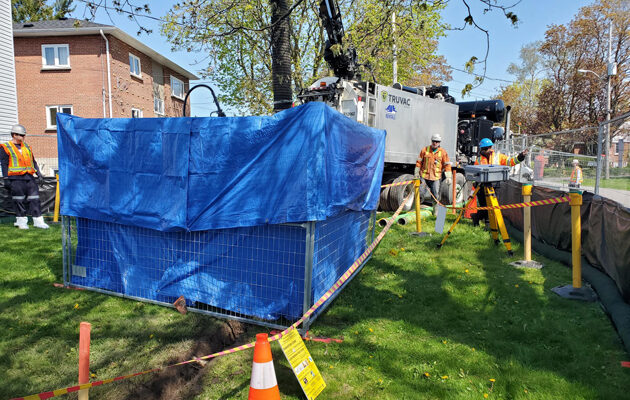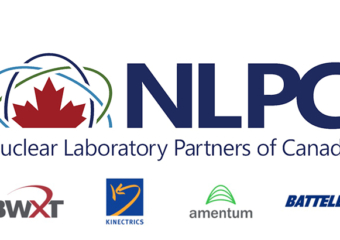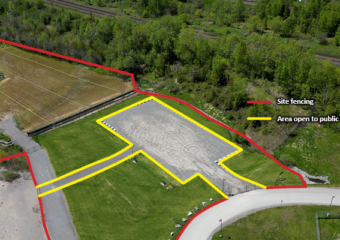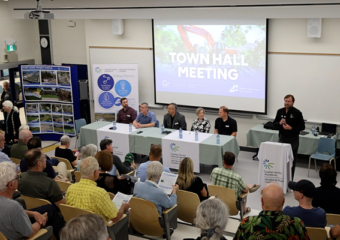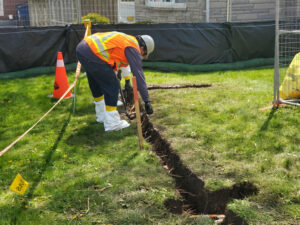 Preserving trees during Port Hope Area Initiative (PHAI) activities remain a top priority. CNL consults with qualified arborists to consider methods of remediation around trees and works closely with property owners to determine the feasibility of leaving trees in place while cleaning up historic low-level radioactive waste on the property. One protective technique that has been in use is “root pruning” – the process of carefully cutting the roots within the drip line of an established tree. The drip line is the distance the branches reach out from the trunk of the tree above the ground
Preserving trees during Port Hope Area Initiative (PHAI) activities remain a top priority. CNL consults with qualified arborists to consider methods of remediation around trees and works closely with property owners to determine the feasibility of leaving trees in place while cleaning up historic low-level radioactive waste on the property. One protective technique that has been in use is “root pruning” – the process of carefully cutting the roots within the drip line of an established tree. The drip line is the distance the branches reach out from the trunk of the tree above the ground
“CNL contractors trim roots prior to mechanical excavation near a tree because root damage from digging can cause harm to a tree and may affect its structural stability,” said Don Lawrence, project lead for PHAI field work. “We protect as many trees as possible.” Root pruning is recommended whenever there will be excavation within the drip line of a tree to minimize damage to a tree’s root system. A tree risk assessment is performed prior to cutting any roots.
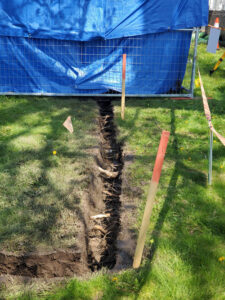 Root pruning does not damage the tree or shrub, though it will stress the plant which encourages the growth of new feeder roots. Small feeder roots bring in food and nutrients to the tree and are likely to be found growing off the main roots at some distance from the actual tree. By pruning the roots it activates a repair response, bringing in additional nutrients for the tree which will protect the overall root base as it’s impacted by digging or other soil work in the area.
Root pruning does not damage the tree or shrub, though it will stress the plant which encourages the growth of new feeder roots. Small feeder roots bring in food and nutrients to the tree and are likely to be found growing off the main roots at some distance from the actual tree. By pruning the roots it activates a repair response, bringing in additional nutrients for the tree which will protect the overall root base as it’s impacted by digging or other soil work in the area.
As PHAI work continues, CNL remains focused on protecting the environment and specifically Port Hope’s tree canopy, while completing cleanup work in collaboration with property owners and the municipality. Successful completion of the project will ensure a positive environmental impact for future generations.

